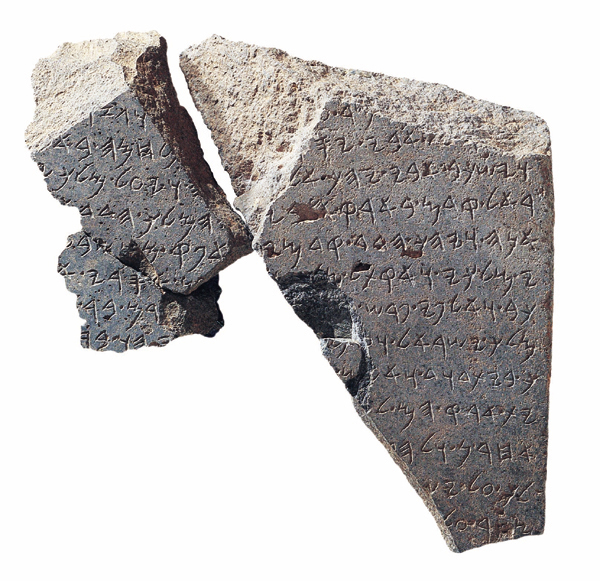Image Details

Tel Dan Excavations, HUC, Jerusalem/Photo by Zev Radovan
“The house of David” is inscribed on this basalt Old Aramaic fragment from Tel Dan, in northern Galilee. In 1993 the fragment’s large, right-hand piece was found in secondary use beneath the rubble of an eighth-century B.C.E. destruction. Two additional pieces were later recovered and fit into place by excavator Avraham Biran, who dated the fragment, called the Tel Dan Stela, to the ninth century B.C.E. Apparently set up by the king of Damascus, the stela tells of victories over “[ Jeho]ram son of Ahab, King of Israel” and “[Ahaz]iah son of [ Jehoram, ki]ng of the House of David.” The biblical rulers Jehoram (851–842 B.C.E.), of the northern kingdom of Israel, and Ahaziah (843–842 B.C.E.), of the southern kingdom of Judah, were exact contemporaries—supporting a mid-ninth-century B.C.E date for the stela.
The Tel Dan Stela thus belies the biblical minimalists’ claim that the kingdom of Judah had no importance—and may not even have existed—until the eighth century B.C.E. That the king of Damascus boasts of defeating the Judahites suggests that Judah was a significant power at least by the mid-ninth century B.C.E.; and the reference to the House of David suggests that Judahite kings traced their descent to an actual David, whose reign is traditionally dated to about a century earlier.
